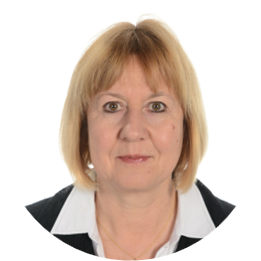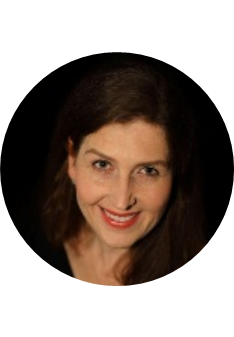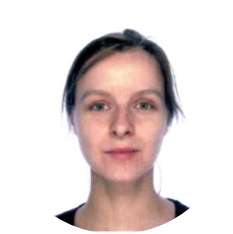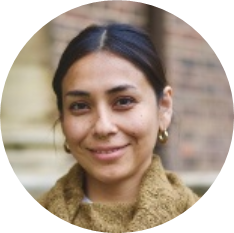Invited speakers

|
Dr Sabine Karg
|
 |
Sabine Karg is a prehistoric archaeologist with an MA from the University of Tübingen, Germany, and a botanist with a Dr rer nat from the University of Basel, Switzerland. During her career, she has worked at several international museums and universities. Since 2016 her research focused on the cultural history of flax (Linum usitatissimum L.) in the Alpine region of Europe. She has published several peer-reviewed articles and a popular book on this subject. She currently holds a grant from the German Research Council to investigate the use of bast fibres in European prehistory. A monograph titled Plant Fibres in European Prehistory is due to be published in July/August 2025.
To know more about Sabine Karg: Karg • Institut für Prähistorische Archäologie • Fachbereich Geschichts- und Kulturwissenschaften
|

|
Dr Hana Lukesova
|
 |
Dr Hana Lukesova has been captivated by the diverse world of organic materials, their physical properties, and processing techniques, as well as their creation and artistic craftsmanship. Her passion for cultural heritage has profoundly influenced her to pursue a career in Conservation. She studied at the Abegg Foundation and the Bern University of Applied Sciences in Switzerland. She received her PhD in Physics and Technology at the University of Bergen on the subject of Plant Fibre Identification in Heritage Objects. She has long worked on the cutting edge of Conservation, Heritage Science, Art History and Archaeology. She co-established the community ComTex, joining archaeologists and conservators at the European Association of Archaeologists (EAA). She is a member of the National Organising Group of the ICOM-CC Conference in Oslo 2026 and contributes to interdisciplinary networking as an assistant of the ICOM-CC Scientific Research group
To know more about Hana Lukesova: Hana Lukesova | UiB
|

|
Dr Liudmila Kozlova
|
|

|
Dr Liudmila Kozlova, from the Kazan Institute of Biochemistry and Biophysics and Université de Montpellier Liudmila Kozlova, is a plant biologist who specializes in plant cell growth, biomechanics, and fibers. She earned her Ph.D. in plant physiology and biochemistry from the Kazan Institute of Biochemistry and Biophysics in Russia. Throughout her career in Russia, Sweden, and France, with financial support from Russian and European agencies, she has published numerous peer-reviewed articles examining the impact of plant cell wall composition and architecture on plant cell functioning within living organisms or as raw materials for various applications.
To know more about Liudmila Kozlova: Liudmila Kozlova | LinkedIn
|

|
Dr Camila Alday
|
|

|
Dr Camila Alday is an archaeologist whose work explores the cultural and ecological significance of fibrous plants in Pre-Columbian coastal societies. Her research bridges archaeological science and critical humanities, focusing on past and present traditional knowledge of weaving and textile plants across South America.
She earned her BA in Archaeology from the University of Tarapacá in Arica, Chile. Her undergraduate thesis examined plant-fibre artefacts from the La Capilla 1 site in northern Chile, Dr Alday went on to complete her PhD in Archaeology at the University of Cambridge, where she investigated bast fibre technologies along South America’s west coast between 10,000 and 3,500 BP. Her doctoral research reconstructed the chaîne opératoire of early fibre production, characterizing the techniques and structures used to create nets, mats, skirts, and bags.
|
|
Currently, Dr Alday is a Postdoctoral Researcher at the McDonald Institute for Archaeological Research and a Fellow at Newnham College, Cambridge. Her ongoing project examines the origins of textile plants and the early use of Gossypium barbadense (cotton) in ancient South America. She is also Co-Investigator for the CRASSH Research Lab Wetlan (2025–2026), which explores human-environment interactions in wetland contexts.
Her research positions plant fibres as pivotal agents in shaping human-plant relations, material culture, and socio-ecological systems. Combining microscopic fibre analysis with ethnographic, historical, and plant humanities perspectives, Dr Alday’s work brings together scientific and narrative approaches to understand the long-term trajectories of fibre technologies. Her publications include articles in Frontiers, Latin American Antiquity, and specialised volumes on textile archaeology. She has served as an editor for the Archaeological Review from Cambridge and has published in leading journals in both English and Spanish.
To know more about Camila Alday: Dr Camila Alday | Department of Archaeology
|

|
Dr Loïc Bertrand
|
 |
Loïc Bertrand is a senior researcher in the Chemistry Department at ENS Paris-Saclay. He initiated the European Institute for the Analysis of Ancient Materials (IPANEMA) at the SOLEIL synchrotron facility in 2007 and served as director from 2010 to 2019, before joining ENS Paris-Saclay in 2020. His research focuses on the characterization of ancient materials and long-term preservation mechanisms in biological and archaeological specimens, with particular emphasis on archaeological textiles. Bertrand develops multiscale photonic analytical techniques, primarily synchrotron radiation-based methodologies, and collaborates with mathematicians on advanced computational approaches for processing spectroscopic imaging datasets in cultural heritage applications.
|

 |
Stay tuned: the full programme will be posted online very soon !
Our committee is currently working on finalising the programme !
|
|


